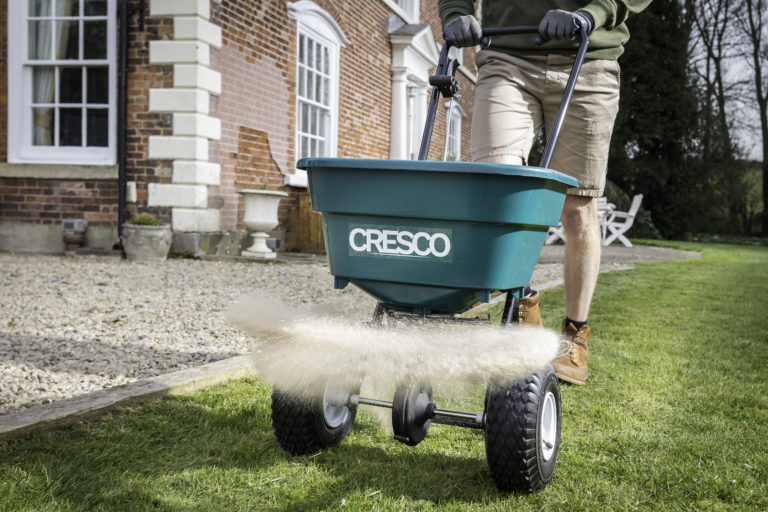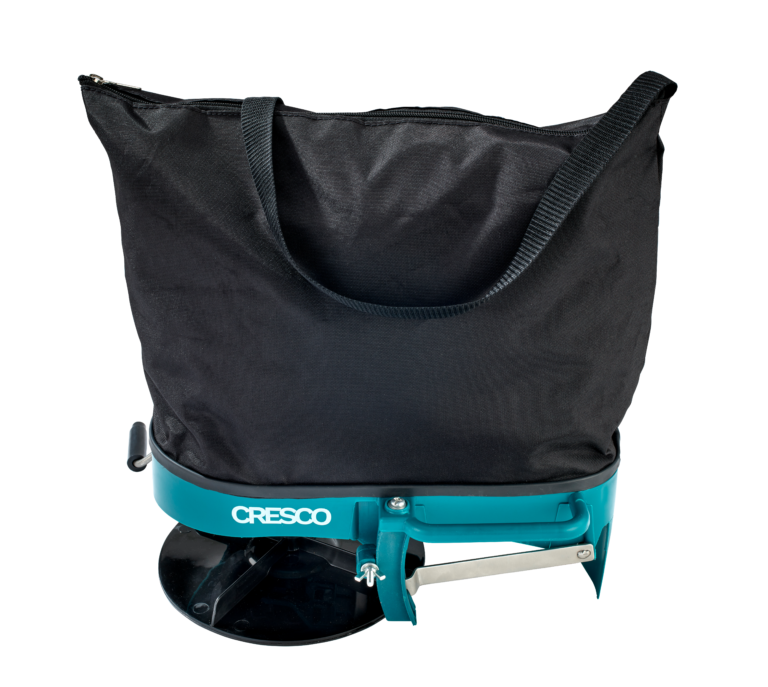Looking for lawn care tips you can trust? Whether it’s how to take care of grass during spring, or fall lawn care tips, discover a wealth of maintenance help and advice to grow healthy grass all year long.
From the best lawn care tools, to when to fertilize for maximum effect, you’ll be confident your efforts will be rewarded. What’s more, if you follow our lawn care tips and maintenance guide you can look forward to a full season of lush, vibrant green grass that will be the envy of your neighbors.
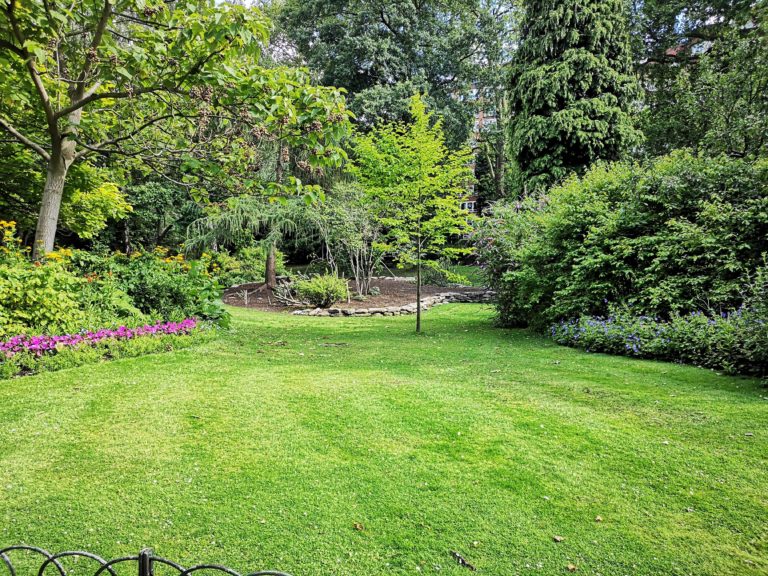
From Summer into Fall: Putting Your Backyard Lawn to Rest for Winter
No matter where you live you’ll want to ensure your lawn is prepared for the upcoming season. With this guide to lawn care you’ll be creating a backyard to be proud of, just like the pro’s!
As we move into fall, preparation for beautiful, healthy grass starts now. How your turf over-winters will determine how good it looks next year. So, spending time caring for your lawn now will be time well spent.
Fall Lawn Care Tips
As summer fades into the distance, it leaves behind a more gentle season with cooler night time temperatures and less heat during the day. The warmth of a fall day still encourages new growth, and it’s a great time to reseed bare patches, or seed a new lawn (as long as the grass is still growing).
Along with warmth, the cooler evenings bring moisture to the air (as well as rainy days) which all help to boost growth. There’s no doubt that grass loves sunshine and water!
If, however, your lawn has taken a hit over a hot, dry summer, it may well be better to consider reseeding in spring. Hard earth is difficult enough for the water to penetrate, without having the added pressure of nurturing seedlings.
Either way, before you start your fall lawn care maintenance, you’ll want to tidy up and review your plan. Here are lawn care tips for fall so your backyard grass is in tip-top shape for winter:
- Clear your lawn of falling leaves and debris – rake up the leaves and compost. Composting leaves add an abundance of nutrients back to the garden. Use the resulting compost in spring as a soil enhancer. Continuing to keep your lawn free of leaves throughout the winter will also help to ensure disease is kept to a minimum.
- Mow the lawn – set the blades on your mower higher than you have been doing over the summer, so the grass is a little longer. This helps the grass to survive if the weather is harsh over the winter period.
- Remove weeds and rake any moss out of the lawn.
- Aerate compacted areas – aerating (sometimes known as spiking), especially compacted areas, helps expose the roots to more water and air. This will help strengthen the roots and make the grass healthier. See lawn care tools for best aerating equipment.
- Top dress your lawn with a sandy soil mix, brushing the top dressing into the newly aerated grass. This helps to level out the lawn and encourages new growth.
- Fertilize your lawn – a fall/winter feed will help to encourage flagging grass and strengthen it for the winter season. If you choose a feed and weed fertilizer, you will
also be helping to keep the weeds under control.
By using these fall lawn care tips you will be giving your backyard grass the best foundation for surviving the toughest of winter weather. As well as being able to adapt to harsh conditions, your lawn will reward you with reviving swiftly when spring comes around.
Spring and Summer Lawn Care Tips for Beautiful Grass All Season Long
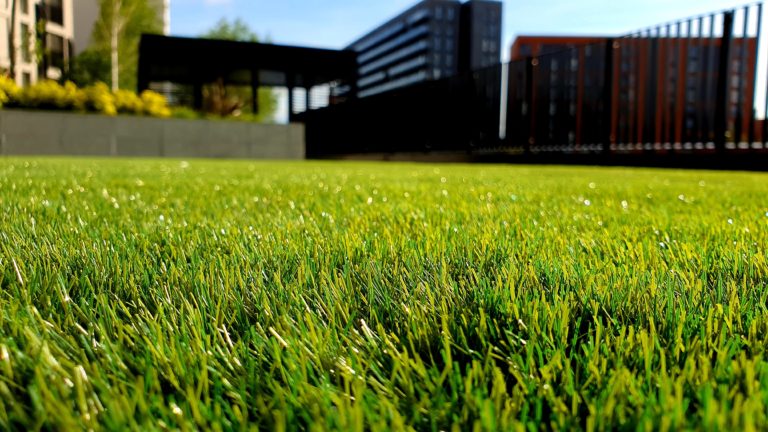
Emerging from the winter gloom, your grass is likely to need assistance to grow into that healthy emerald green lawn you have in your mind’s eye.
- First things first, let’s remove all the dead leaves, twigs and debris from all those winter storms. Use a leaf rake to lightly lift any rubbish off the grass.
- Next, clear any moss and thatch from the grass by scarifying. In essence this is best done by using a spring tine rake (see lawn care tools below) to gently tease the dead material away from the base of the grass. This will help light and air get to the root, and encourage growth. It also allows for any fertilizer you may use to get to the plant more quickly.
- Once you’ve had a chance to remove any dead grass and moss, you’ll want to mow your lawn. As this will be the first mow of the season, take it easy! Make sure the blade is nice and sharp, and cut on a higher setting. Scalping your lawn on the first cut is not only a bad look, but it encourages those pesky weeds to take over – and you don’t want to spend the entire summer weed killing!
- Following on from a mow, tidy up the edges of the lawn. This one job is guaranteed to set your newly mowed lawn off to perfection.
- Back to the fall tips we go! Aerating your newly mown lawn will help get oxygen into the grass, and of course open up channels for top dressing to be applied, helping drainage at the same time.
- After aerating you’ll want to fertilize, and now may be the perfect time for a combined weed and feed. Calibrating your fertilizer spreader is most important at this point to make certain the correct amount of fertilizer is being distributed. This is so your lawn will look uniformly green and doesn’t end up looking stripy with dead patches. Being able to calibrate your spreader so it spreads fertilizer evenly for good growth is key. Take a look at this article on how to calibrate your fertilizer spreader for a guide on setting up your spreader.
- If your lawn looks a little bald after all the work you’ve carried out, don’t despair! Patches are easily fixed by overseeding. Indeed, the simplest way is to scratch up the surface of the bare soil a little, and sprinkle grass seed across the top. If it’s not due to rain, water the seeds in by hand.
- Last, but not least, water. Watering is something you’ll need to keep an eye on, especially when the weather is hot. Whilst grass is fairly hardy, it will die down if not watered. And nobody wants a yellowed, dying backyard! Equally so, you don’t want the grass to be dependent on too much water. If you are careful with watering you will encourage the roots to establish themselves deeper in the ground, naturally seeking out the moisture, rather than you having to supply it.
Summer Lawn Care Tips
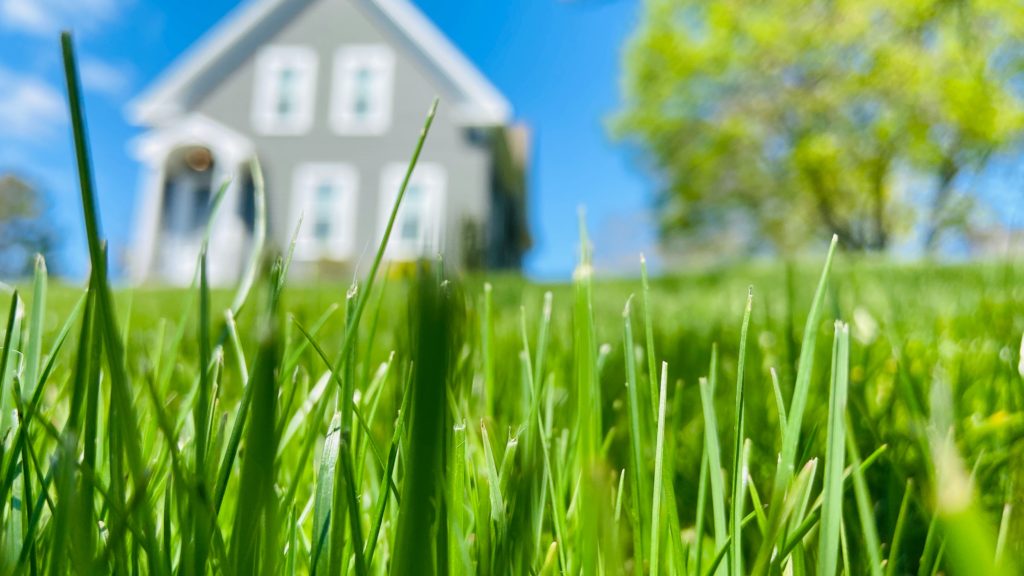
If you’ve been following our lawn care tips so far, you’ll be much better prepared for enjoying the fruits of your labor. Rest assured, apart from mowing and the odd weed patrol, you’ll be able to relax and admire your handsome, emerald-green turf. Not wishing to make more work where unnecessary, here are our summer lawn care tips:
- Mow your lawn at least once a week
- Keep your grass well watered – water, if necessary, early morning or late evening when the heat of the day has gone
- Consider a feed if the lawn is losing color
- Keep up the weed patrol and dig out individual ones when spotted
Top Lawn Care Tools for Essential Maintenance
Lawn Rake
Use a spring tine rake to remove moss and dead grass. The fine tines of the rake are gentle with the healthy grass, yet tough enough to fetch out the debris and moss.
Aerating Tool
One way to do this is with an ordinary garden fork. Or you can purchase a special tool
called a hollow tiner. Either of these tools works well to create the hollow tube-like holes in
the turf you are after. Snazzy aerating shoes is another way to get the job done! As you
walk across the grass, spikes on the bottom of the shoes penetrate the lawn, leaving your grass refreshed.
Fertilizer Spreader
Whether you choose a broadcast spreader or a hand-held spreader, you’ll want to invest in a fertilizer spreader that earns its keep. Take a look at our article How to Use a Fertilizer Spreader Like a Pro for tips and help on choosing the best spreader for your backyard.
Leaf Rake
By using a plastic, flexible rake, you’ll be able to lift the leaves off the grass without
damaging the blades. It’s important to remove the leaves as pests and disease are encouraged to grow as leaves decompose.
Why not create leaf mold Simply gather all the leaves together and place in a compost bin. Even a straightforward black bin liner will do the job. If the leaves are dry, moisten them a little and poke holes into the bin liner, so air can circulate.
Key to composting leaves is sufficient air and warmth to allow microbes to activate. Make sure to position your leaf mold mound in a sunny spot so it helps maintain heat, thereby increasing the speed of breakdown.
Lawn Mower
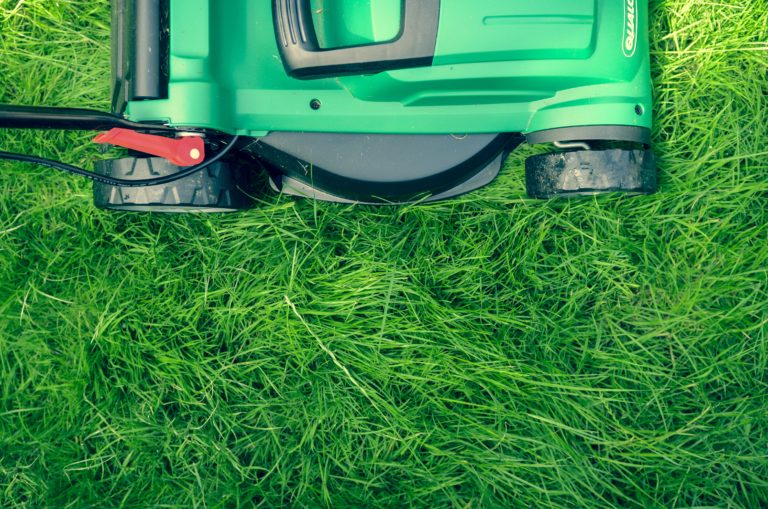
Essential equipment for keeping your healthy lawn under control. It’s worth investing in a quality machine with different height options, allowing you to control the extent of your cut at any one time.
Lawn Shears
A long handled tool especially designed for neatening up the edges of your lawn. These add the finishing touch to your work, allowing the beauty of the grass to shine.
Water Sprinkler

Consider a water sprinkler for your lawn if you live in a hot, dry climate. This will help keep your lawn refreshed and green in color, and help you cut down on maintenance time.
From Beginners to Experts with Easy Lawn Care Tips
With the aid of these easy lawn care tips, you’ll soon be confidently showcasing your fabulous backyard lawn to family and friends. As well as these suggestions, buying a few good lawn care tools will help your work, making it more enjoyable and successful.
Cresco Spreaders has combined technology and know-how into all our fertilizer spreaders, so it makes your task easier. Simple tasks like calibrating your spreader, or changing from summer fertilizing and seeding to winter salt and ice melt spreading, we’ve got you covered.
